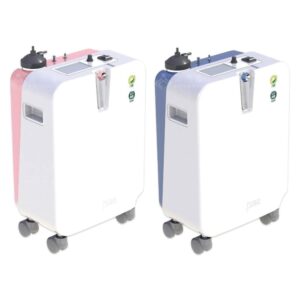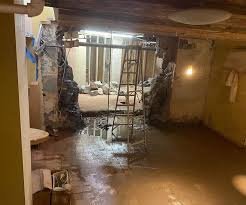Introduction to Section J Assessments
Section J assessments are a crucial component of building compliance in Australia, particularly in relation to the National Construction Code (NCC), formerly known as the Building Code of Australia (BCA). These assessments evaluate the energy efficiency of non-residential buildings, ensuring they meet the minimum energy performance requirements set out in the NCC. Compliance with Section J is mandatory for the construction and major renovation of commercial buildings such as offices, shopping centres, warehouses, and public buildings.
The goal of Section J assessments is to reduce greenhouse gas emissions, decrease energy consumption, and promote sustainable building practices. With increasing emphasis on environmental responsibility, understanding and implementing the standards defined in Section J is more important than ever for developers, architects, builders, and energy assessors.
What is Section J?
Section J is a part of the NCC Volume One, which deals with the energy efficiency provisions for Class 3 to Class 9 buildings (i.e., non-residential buildings). The NCC is updated every three years, and the provisions in Section J are revised to reflect advancements in energy efficiency standards, technologies, and practices.
The key objective of Section J is to ensure that buildings are designed and constructed in a way that minimizes energy usage for heating, cooling, ventilation, lighting, and other operations. Section J outlines the minimum necessary requirements that a building must meet in order to be considered energy efficient.
Section J assessments serve as a tool to verify that a building project meets these mandatory standards. The assessment process can vary depending on the type of building, its design features, and the chosen compliance path.
The Structure of Section J
Section J of the NCC is divided into multiple parts, each focusing on a different aspect of building energy performance:
- J1 – Building Fabric: This part deals with the insulation and thermal performance of external walls, floors, and roofs.
- J2 – Glazing: Regulates the thermal performance and solar heat gain through windows and other glazed surfaces.
- J3 – Building Sealing: Ensures that buildings are appropriately sealed to prevent unwanted air leakage.
- J5 – Air-conditioning and Ventilation Systems: Sets out requirements for HVAC systems, including efficiency, control, and insulation.
- J6 – Artificial Lighting and Power: Focuses on lighting efficiency, zoning, and controls.
- J7 – Hot Water Supply: Addresses the efficiency of hot water systems in commercial buildings.
- J8 – Facilities for Energy Monitoring: Requires provisions for monitoring and reporting energy usage in certain large buildings.
Each of these parts is evaluated during the Section J assessment process to ensure the building design complies with the relevant standards.
Compliance Pathways
There are three main compliance pathways for Section J assessments:
1. Deemed-to-Satisfy (DtS) Provisions
This is the most straightforward path and involves adhering strictly to the prescriptive requirements set out in Section J. If all aspects of the building meet or exceed the set criteria (such as R-values for insulation or specific window performance metrics), then the building is deemed compliant.
The DtS route is typically used for simpler projects where design flexibility is not a priority.
2. Verification Using a Reference Building (JV3)
This performance-based pathway allows for more design flexibility. Instead of meeting each individual DtS requirement, the entire building is modeled using energy simulation software. The energy usage of the proposed building is then compared to a reference building that meets all DtS provisions. If the proposed building uses equal or less energy than the reference model, it is considered compliant.
This method is ideal for complex buildings, unconventional designs, or when innovative energy-saving features are included in the design.
3. Performance Solutions
These are alternative solutions that demonstrate compliance through other acceptable means, such as expert judgment, evidence of suitability, or comparative analysis. Performance Solutions are often used when a unique material, system, or building feature is proposed that doesn’t directly match the DtS provisions or JV3 method.
Who Needs a Section J Assessment?
Any project involving the construction of a new commercial building or significant renovation to an existing one will typically require a Section J assessment. This includes:
- Office buildings
- Retail shops and shopping malls
- Warehouses and industrial facilities
- Hospitals and aged care facilities
- Educational institutions
- Hotels and motels
- Public buildings such as libraries, town halls, and recreational centres
For builders and developers, obtaining a Section J assessment early in the design phase is crucial. Delaying the assessment until later stages can result in costly redesigns if the building is found to be non-compliant.
The Process of a Section J Assessment
A Section J assessment is usually carried out by a certified energy assessor, building consultant, or sustainability consultant. Here’s a general overview of the process:
- Review of Building Plans: The assessor examines architectural drawings, mechanical plans, electrical layouts, and glazing specifications.
- Assessment Method Selection: Depending on the building complexity and client requirements, the assessor chooses between DtS, JV3, or a performance solution.
- Analysis and Reporting: The assessor evaluates the building against Section J criteria, using manual calculations or energy modeling software. A formal report is then prepared detailing compliance status, areas needing improvement, and recommendations.
- Submission for Approval: The final Section J assessment report is submitted to the building certifier or regulatory authority as part of the overall building approval process.
Benefits of Complying with Section J
Meeting Section J requirements not only ensures legal compliance but also offers several practical and financial benefits:
- Energy Savings: Compliant buildings use less energy, reducing operational costs.
- Improved Comfort: Better insulation and HVAC systems result in more stable indoor temperatures and improved occupant comfort.
- Sustainability: Contributing to reduced carbon emissions and promoting environmentally responsible construction.
- Marketability: Energy-efficient buildings are more attractive to tenants and buyers who prioritize sustainability.
- Future-proofing: Buildings designed to current energy standards are more likely to remain compliant with future regulations.
Challenges in Section J Compliance
Despite its benefits, achieving compliance can present challenges:
- Complex Designs: Innovative or non-standard building designs may struggle with DtS compliance and require JV3 modeling.
- Cost Considerations: Upfront costs for higher-performing materials or systems may be higher, although offset by long-term savings.
- Regulatory Changes: As the NCC is updated periodically, staying current with changes in Section J is essential to avoid non-compliance.
Conclusion
Section J assessments play a critical role in the construction of energy-efficient commercial buildings in Australia. Whether you are a developer, architect, or building consultant, understanding the ins and outs of Section J can lead to better outcomes for your projects, both environmentally and economically. Early engagement with an experienced assessor and choosing the right compliance path can simplify the process and ensure that your building not only meets current standards but also delivers long-term value. In an era where sustainability is a growing priority, Section J assessments are more than a regulatory requirement—they are a smart investment in the future of building design.

















